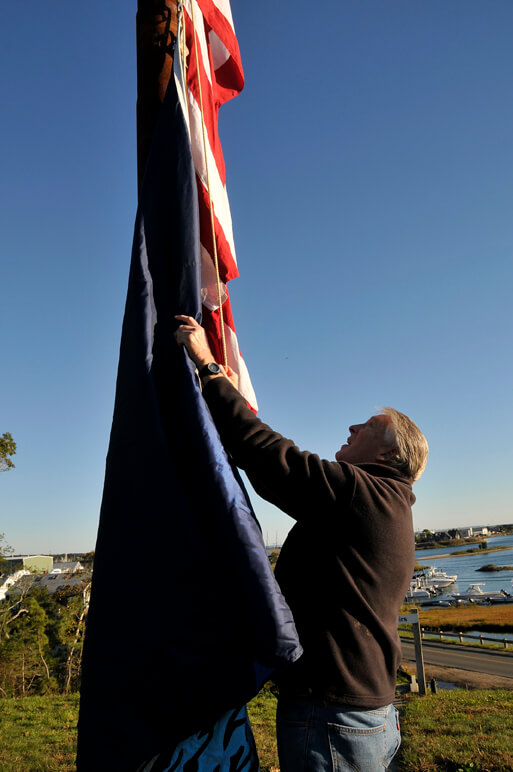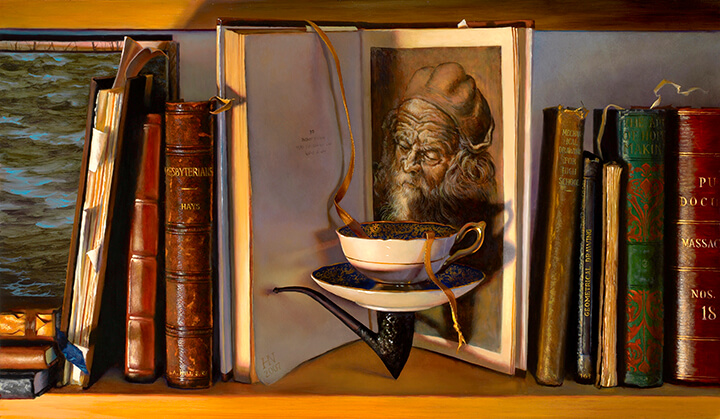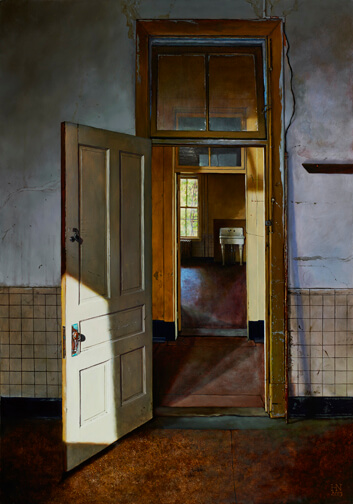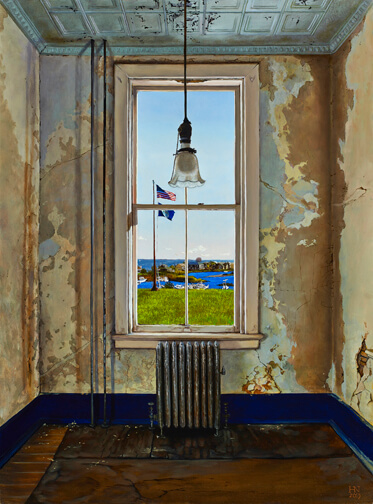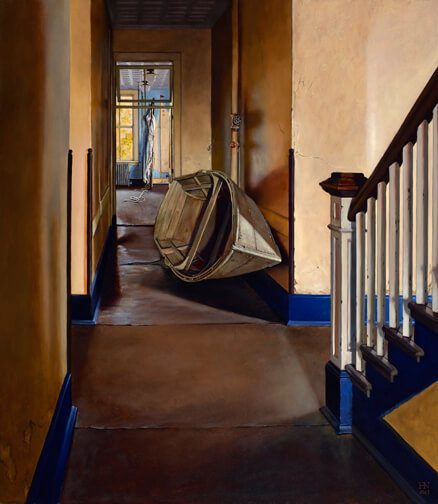Summer begins here with a whisper.
Gonna let the warm air dry out the grass
before I take on the mowing
which needs to be done
before we can plant
the last of the seedlings
which needs to be done
before the week is out
so
while I’m waiting for grass to dry
I’ll paint.
Memorial Day – 2013
From the Reclamation Series
Reclamation – An exploration of a hidden island treasure
Hidden vistas, historic vineyard homesteads, echoes of vintage islanders, the tools of their trades and the marks they have left in the wake of their time here are meaningful touchstones for the muses and vivid fodder for the creative soul. So it was, that when I sat down at my studio table a few months ago and read in the Vineyard Gazette about the Martha’s Vineyard Museum acquiring the old Marine Hospital building in Vineyard Haven, I was eager to see it for myself.
The Marine Hospital was built in 1895 and sits on a prominent hill overlooking what had only a few years earlier, in 1871, assumed its modern name of Vineyard Haven. Over the last hundred plus years it had become obscured by the substantial growth of oaks, maples and at least one Siberian Elm whose towering beauty still envelopes one entire wing. I’m probably not the only visitor, when hailing the island from the upper deck of the ferry, to be surprised by its stalwart presence on the horizon, after the museum returned the landscaping to its earlier state. While the clearing reveals an old friend on the town’s skyline, it also restores the dramatic view from atop that hill looking out over the expanse of lagoon and harbor and Vineyard Sound.
My curiosity was satisfied when Denys Wortman, MV Museum Board member whose Vineyard roots are deeply woven into the fabric of the island, graciously guided me on a tour of the building last October. He filled me in on the history of the building which was a 30 bed state of the art hospital treating islanders, soldiers in both World Wars I and II, and sailors who passed through the busy port. It boasted the island’s first x-ray machine and elevator in a brick addition which was built in 1938. Walking through its cavernous hallways we peered around the blackened walls of the darkroom where those x-rays were developed and explored the operating room and its alcoves.
The hospital was de-commissioned in the early 1950’s and the St. Pierre family took over its care and ran a summer camp there up until 2006. You can see echoes of those happy campers in the murals of sailboats painted on the wall in one of the bright corner rooms. The building is infused with light by virtue of the many tall windows and the glassed transoms over the doorways which let that light cascade deeply into the space. When I remarked on the graceful woodwork and the way each of the stuccoed corners was wrapped in a slender finial-capped turning of mahogany, Denny said there is someone on the island who has some extra pieces of those in a barn as his father was one of the craftsmen who worked on the building.
It’s that kind of lore which excites me and makes this building special. From the half-tiled walls to the pressed tin ceilings, the patched and re-patched plastered surfaces and the ornately decorated cast iron radiators, the juxtaposed textures of weathered brick and smoothly polished patina of creamy porcelain, to the greening of the old copper and the deep marine blue painted baseboards that anchor the vaulted spaces to solid ground… the architecture is elegant in its simplicity and charms the esthetic heart.
I returned to the building many times during that autumn visit and tried to experience how the light and shadows changed over the course of a day. One morning Denny met me and brought along the museum flag. When I stepped outside to walk across the wide expanse of front lawn to help him raise it I commented on how there wasn’t a cloud in the crisp October sky. “Pilots call that Severe Clear”, he replied.
Back in my Pennsylvania studio when I was looking through the sketches and notes I had taken I found that I had written down that phrase and, for almost every morning of the dozens of days it took me to paint this view from the balcony, the spring sky here was brilliantly cloudless…so the title fits.
Click Here to see all the paintings in the series.
I didn’t start out to make this a series, but as I finished each painting and saw them leaning along the studio walls it became clear that together they were beginning to tell a deeper story. One which the building itself had to tell. I wasn’t there to be a witness to the bustle of its early hospital days, or the loneliness of the few years that it sat vacant, or the second incarnation as children’s voices filled the hallways, but the spirits of those who moved through the corridors during its lifetime were present and as I studied and listened I was beginning to see the first inklings of its next chapter.
The museum had begun to move some of its acquisitions into the future home, and I found a particularly symbolic beauty in the dear old row boat that was resting against the standpipe in the downstairs hallway. Through the open door behind it you could just catch a hint of the mural depicting the “Sweet 16” Menemsha wooden sailboat. A real life version of which is tarped over and grounded on blocks outside and just around the corner. Though a fair enough challenge to capture the building and the boat faithfully in all their weathered-chip-painted glory… I had a blast painting them both.
And I learned something about myself as an artist over the months of producing this collection of paintings. With each one I dug a little deeper into the surfaces, took more time to study the textures and stepped further out on that edge of rendering. I went from seeing the rooms first as vessels of color and light and then slowly, as details came into sharper focus, a sort of map would appear. A map of stories. Those finely chiseled cracks in its well used surfaces were asking to be painted honestly and I had to find the courage to listen and to work harder at seeing the building…and myself.
Both acts of… reclamation.




